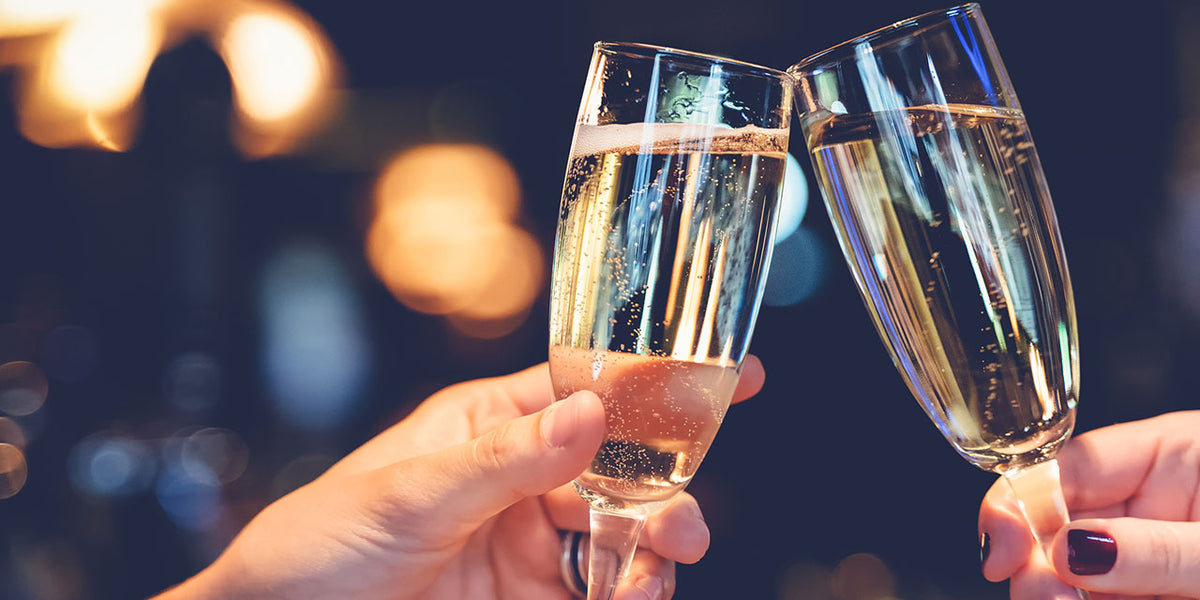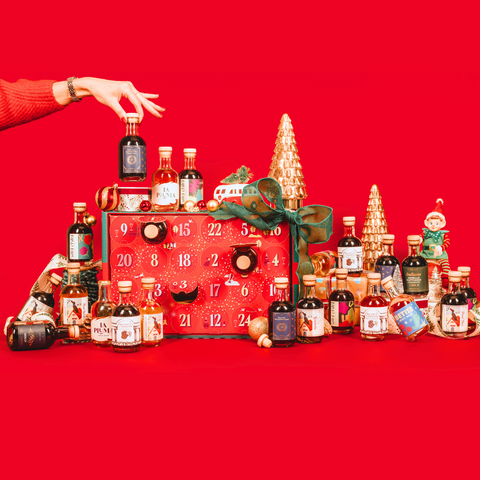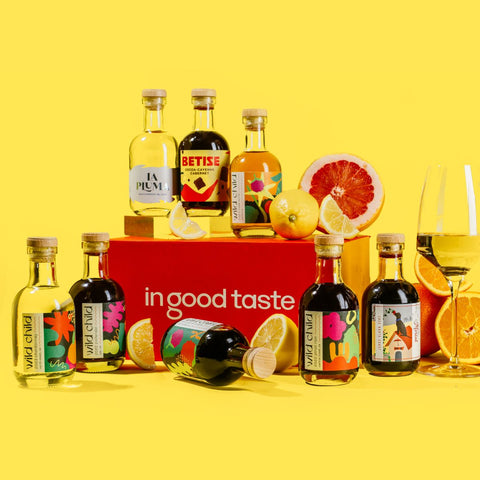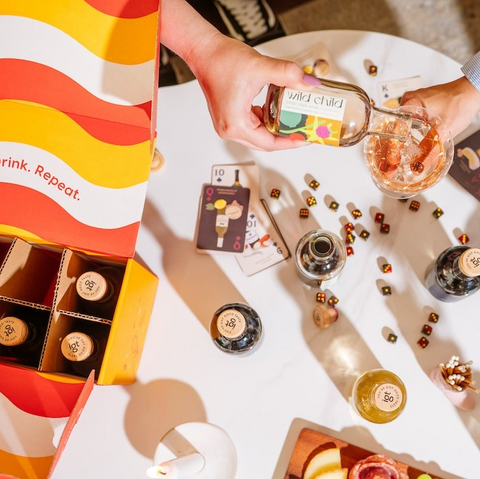Pop the Cork, Let’s Talk Bubbles!
Champagne is the perfect treat to pair with any celebratory occasion. From weddings and birthdays to bachelorette parties and the typical Friday night, this effervescent beverage is a welcome companion to life’s special get-togethers.
Did you know that the bottle of bubbly you love to drink may not be Champagne at all, but rather a sparkling wine? You’re not alone in thinking all bubbly is champagne. As we move along in this article, we will run you through the history of actual champagne, the differences between champagne and other sparkling wines from around the world, as well as how to choose the right one for your tastes, and which foods pair best!
History
Champagne originates from the Champagne region of France. This region has been known to produce wine even before medieval times, although they have not always been the sparkling variety that the area is known for today. Romans originally planted the vines there, but wine from Champagne was struggling to keep up with its countrymen in other wine-growing regions. . With chalky limestone soils, planters struggled to ripen red grapes to the level of other regions in France like Burgundy. Early Champagne wines were more acidic, had less sugar content, and had a much lighter body than Burgundy wines. What they didn’t realize at the time was that this terroir was perfect for sparkling wine.


In fact, the first sparkling Champagne was created by accident. What a happy accident, right? Well, at the time, they didn’t think so, even referring to this as “the devil’s wine” because the bottles and corks couldn’t withstand the pressure of the carbonation of the wine. Luckily, that changed in 1844 when Adolphe Jaquesson invented the muselet to prevent cork blowouts. In the mid 19th century, Champagnes winemakers also adopted the method champenoise (or the traditional method), which was documented 200 years earlier by English scientist Christopher Merret. This led to a steep rise in the production of Champagne. In 1800, it was a regional production with about 300,000 bottles produced, and by 1850, that number jumped to 20 million bottles.

Champagne vs. Sparkling Wine
Champagne and sparkling wine can be very similar, but not the same. They are sisters, but not twins. All Champagnes are sparkling wines, but not all sparkling wines are Champagne. We’ll explain that in a little more detail.
Champagne
Champagne is only Champagne if it’s made in the Champagne region of northern France (drinking game time, take a sip every time we say Champagne!), and these wines are held to some stringent standards. This region is about 90 miles Northeast of Paris. Like we mentioned in the history of Champagne, the soil here is chalky and full of limestone, leading to highly acidic grapes, which is a key for good sparkling wines. The méthode champenoise (or the traditional method) is used to make official Champagne, which means that the wine undergoes a second fermentation inside the bottle. This method is more intensive than others and helps to add complexity to the wine. Champagnes have an average ABV of 12.2%, slightly less than the average glass of wine.

Champagnes that are held to a strict level of production in France are made from a blend of three grapes; Chardonnay, Pinot Noir, and Pinot Meunier. “Blanc de Blancs” are Champagnes made exclusively from Chardonnay, while “blanc de noirs” are made solely from pinot noir. There are also rosé Champagnes, made from a blend of these red and white grapes, with a pinkish hue that comes from brief contact with the red grape skins during the fermentation process.

While it’s tempting to sip your Champagne from a flute glass, experts recommend that you enjoy those bubbles from a traditional white wine glass. The shape allows the wine to breathe so you can experience all of those tasty complexities in the wine.

Sparkling Wine
For any other effervescent wine made outside of Champagne, it is referred to as sparkling wine. Several countries are known for delicious sparkling wines, such as Italy, Spain, and the United States. Depending on where your bottle of bubbly is from, it may also go by a specific name.

Prosecco is an Italian sparkling wine made from prosecco (glera) grapes. Italy is also known for a more unique sparkling wine, the Lambrusco, a sparkling red for when you feel like testing the dark side of bubbly. Cava is Spain’s version of sparkling wine and is made with a blend of maca beu, parellada, and zarello grapes. Outside the strict rules of Champagne production, there is more freedom in sparkling wines for the type of grapes that are used and the method by which these wines get their bubbles.
Sparkling wines may undergo several methods to earn their effervescence. Some may use the traditional method that Champagnes uses, although, as we know, unless these wines are from the Champagne region, they are still called sparkling wines. Sparkling wines, especially those in the Napa area will often have “method champagnes” indicating that while the grapes are from California, the style of wine making is the same they use in the Champagne region.
Another method is called the Charmat or tank method, where the wine undergoes its second fermentation in a large tank before being bottled. Sparkling wines that have undergone the transfer method get their secondary fermentation in the bottle much like the traditional method, but the wine is then poured into a tank, filtered, and re-bottled, making the process faster than the traditional method.
The final and cheapest method is the carbonation method, where carbon dioxide is pumped into a tank of wine, and the contents are then bottled under pressure.

Styles of Sparkling Wine
Champagnes and sparkling wines are extra in every way, and the way their level of sweetness is classified is no exception. If you find yourself in the store for a bottle of bubbly but aren’t sure what these terms mean, we’ve got you.

If you’ve reached for a bottle of sparkling deliciousness that falls on the dry end of the spectrum, you may be wondering - what dishes can I pair with this? For drys, you can’t go wrong with light seafood and chicken dishes. Oysters, deviled eggs, shrimp cocktails, white pizza, and fried chicken are also pairings that are just *chef’s kiss* incredible. On the other hand, if you’ve dipped your toe into the sweeter side of the sparkling scale, fresh berries and soft cheeses are the perfect companion for a delightful pairing.
Tranquillo, Frizzante, and Spumante
Along with different levels of sweetness, Champagnes and sparkling wines also have varying levels of effervescence. Normal, non-sparkling wines are referred to as Tranquillo or still wines. They’re the chill ones, and we love them for that.
Champagnes described as frizzante are gently sparkling wines. They will have smaller, lighter bubbles and a more delicate fizz. Sparkling wines with full fizz are referred to as spumante.

Can You Make “Sparkling Wine” With a Soda Machine?
While this is certainly a, shall we say, “creative” idea, the short answer is no, you cannot make sparkling wine with a soda machine, not real sparkling wine anyway. Although you may be able to coax some effervescence from your beverage by using such a method, soda machine companies do not recommend doing this, as it could damage the machine itself. You’re better off buying an inexpensive bottle of bubbly from the store. Plus, the at-home method comes without the iconic cork pop, and what’s the fun in that?
The Best Mimosa Recipe for your Champagne
Mimosas are the ideal justification for indulging in those sweet, sweet bubbles before noon. To make the perfect mimosa for your next brunch or get-together, we recommend starting with a dry or brut champagne. This will add a nice contrast to the sweetness of the orange juice, which, of course, is the second ingredient. Pro tip: if you’re able to get your hands on some oranges, fresh-squeezed juice makes all the difference for a refreshing mimosa.
The best mimosa is equal parts Champagne and juice. Be sure to pour the Champagne first, as this allows the beverage to mix itself while you pour the orange juice. To snazz up this recipe, you can also add fresh fruit or some fruit puree for a little extra pizzazz. To give your mimosa a little more oomph, change the ratio to 3:1 sparkling juice and add a splash of orange liqueur.
Champagnes and sparkling wines are a fun addition to any occasion. That iconic cork pop is enough to get any party started, and now that you know a little bit more about our effervescent friend, you can pick the perfect bottle with confidence!








